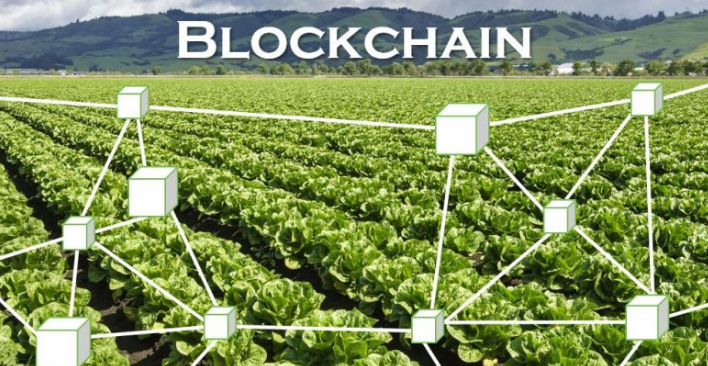 Blockchain technology is being used in a variety of ways to help improve efficiency, cut costs, create greater transparency and offer provenance of where goods have come from in the agriculture sector.
Blockchain technology is being used in a variety of ways to help improve efficiency, cut costs, create greater transparency and offer provenance of where goods have come from in the agriculture sector.Here are four ways through which this is happening:
-Traceability - Blockchains are helping supply chains and logistics in the agriculture sector to improve traceability. This helps companies to quickly track unsafe products to their original source, so potentially preventing illness and reducing the cost of product recalls. A good example of this is the Walmart venture with IBM to track green leaf products it sources and sells. Frank Yiannas of Walmart has said “that the improved data traceability provided by the IBM platform reduced the time it took to trace a mango from the store back to its source from seven days to 2.2 seconds. That reduction in time enables companies to identify contaminated supply chains and recall affected products before they are consumed and cause illness”. Meanwhile, Irish-based arc-net has collaborated to create a whiskey Blockchain with Scottish distillery Ardnamurchan, which includes information on the water and grain used in the production of Scotch, as well as the identity of the distillers who made the whiskey. Wyoming cattle ranchers, who wanted to know where their beef was being sold, have created BeefChain, which tracks beef along the supply chain, and so enables the end-consumer to have provenance i.e. where the beef they buy has come from.
-Payments - San Francisco - based Veem is used by tea distributor Tealet, to pay more than 30 different farmers and suppliers in countries across Africa and Asia, using a platform that harnesses Blockchain technology. Fees with which to pay suppliers can be as much as 12%, and international payments can take up to five days. The Veem platform uses Blockchain technology to convert payments from the source currency into the local currency. International payments cost 1.9% and are paid to vendors in one to three days (so it is faster and cheaper using Blockchain technology).
-Commodity Management - Agricultural commodities business is massive and it can be difficult to collate the volume of data and minimise the time-delays it takes to get paid. Blockchain technology is able to help with these challenges. Australian company, AgriDigital, provides cloud-based agricultural commodity management services recorded onto a Blockchain. In 2016, AgriDigital completed the world’s first “farmer to buyer” wheat sale recorded on a Blockchain. Since then, it has run projects for supply chain provenance, real-time payments, digital escrows and supply chain finance for the food sector. At the end of 2017, Dutch-based Louis Dreyfus Co completed its first agricultural trade, using Blockchain technology, for a sale of US soybeans to China. Documentation, including contracts, letters of credit, and government certifications, were all digitised, and data was automatically matched in real time via a Blockchain platform, which avoided duplication and the need for manual checks. This reduced the time to process documentation to one-fifth of the usual time, and cut overall transaction time from two weeks to one.
-Sharing information - Companies which buy or invest in agricultural products like to have information about the product before they agree to purchase it. This can include anything from salt and sugar levels in tomatoes (which would affect flavour) to information about the health of a crop. Such information can help banks and others predict whether a farm will be able to repay a loan. California-based Ripe.io, collects data from sensors, spreadsheets, manual surveys and other sources along the supply chain, to give commercial buyers detailed information about product attributes. Its first project tracked tomatoes from Ward’s Berry Farm in Massachusetts that were destined for the salad chain Sweetgreen. Data points such as light, humidity, air temperature, tomato colour, salt, and sugar content, and pH levels were entered into a platform using Blockchain technology. Tracking this information helped Sweetgreen supply the tomatoes to customers’ when they were at their best, and reduced waste from spoilage.
So, there are many ways that Blockchain technology is being used in the agriculture sector, and as we see other technologies like Artificial Intelligence (AI) and Internet of Things (IoT) evolve, we are likely to see greater use of Blockchain technology. Blockchain technology will be like a skeleton from which other technologies will, in effect, “hang from”.


